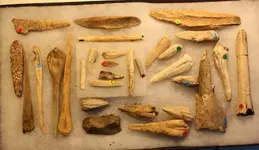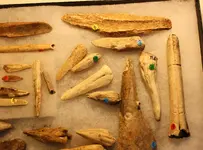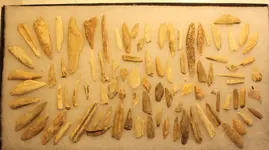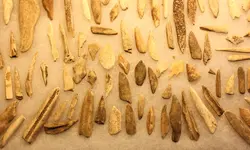Lone Star
Sr. Member
- Joined
- Jan 6, 2010
- Messages
- 434
- Reaction score
- 632
- Golden Thread
- 0
- Location
- North of the Balcones Escarpment
- Detector(s) used
- Garrett Ace 400
Garrett AT Pro
- Primary Interest:
- All Treasure Hunting
Not all well revered artifacts are stone. Thru the years I've assembled lots of pottery and bone frames as well as flinty rock frames. You don't see that much bone debris because it's so elementally fragile. Bone won't hold up well in Texas soil environments for the most part. The Central and West Texas Soils will degrade human and small animal bone within a few hundred years. I have never found bone on any of the many digs I was on unless it was large bison bones. Even those won't make it more than a thousand years in normal forest or prairie soils. If they do last a bit, they are also encrusted with silica/calcium deposits. The same a what we find on very early stone artifacts.
Enter the Anaerobic environments. In areas that are permanently under water, like the matrix you find under salt water shell middens, bone will last indefinitely. This is one of the things I learned by accident while processing and combing thru middens below the tide line. They are finding ancient artifacts this way, like canoes near the great lakes and village remains in Alaska.
Any Anaerobic mud is gonna stink bad. It's also nasty to dig thru. But you do find some surprises.
On the Galveston Bay and Bayou Shorelines there isn't any toolstone available locally. It all had to be brought in from trade partners about 100 miles any direction. Bone and Gar Scales were used in place of stone for awls, different tools, and arrow tips.
Enter the Anaerobic environments. In areas that are permanently under water, like the matrix you find under salt water shell middens, bone will last indefinitely. This is one of the things I learned by accident while processing and combing thru middens below the tide line. They are finding ancient artifacts this way, like canoes near the great lakes and village remains in Alaska.
Any Anaerobic mud is gonna stink bad. It's also nasty to dig thru. But you do find some surprises.
On the Galveston Bay and Bayou Shorelines there isn't any toolstone available locally. It all had to be brought in from trade partners about 100 miles any direction. Bone and Gar Scales were used in place of stone for awls, different tools, and arrow tips.
Amazon Forum Fav 👍
Attachments
Upvote
12










